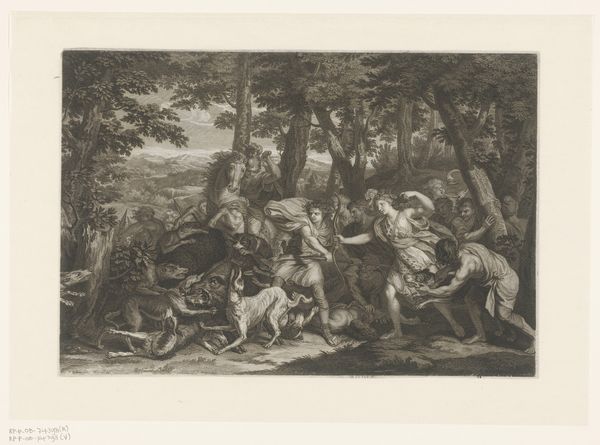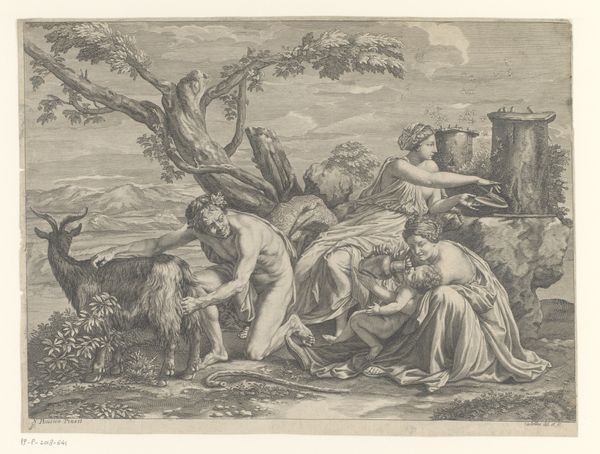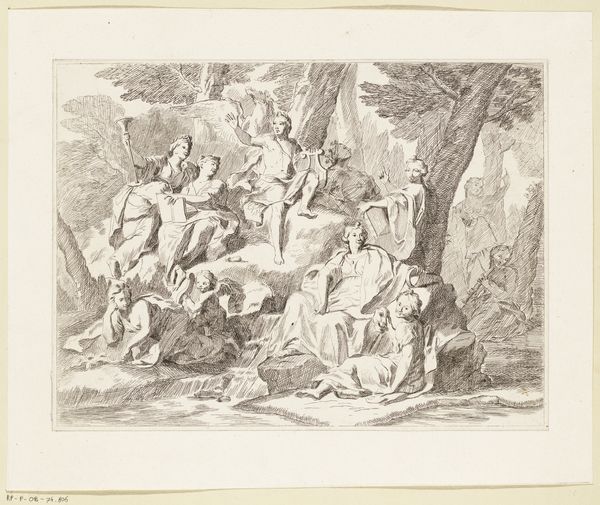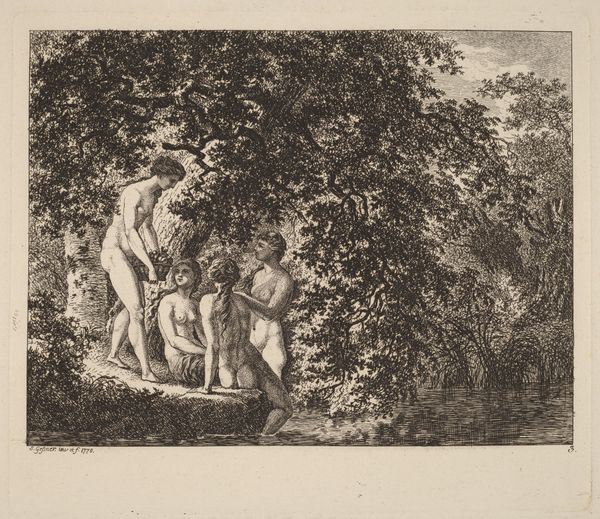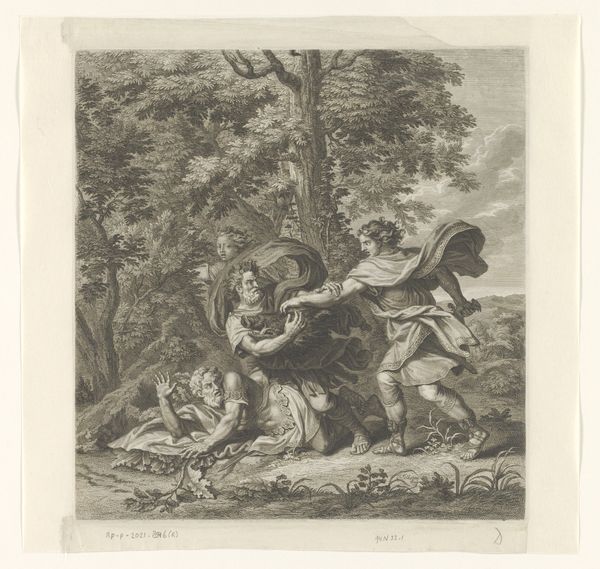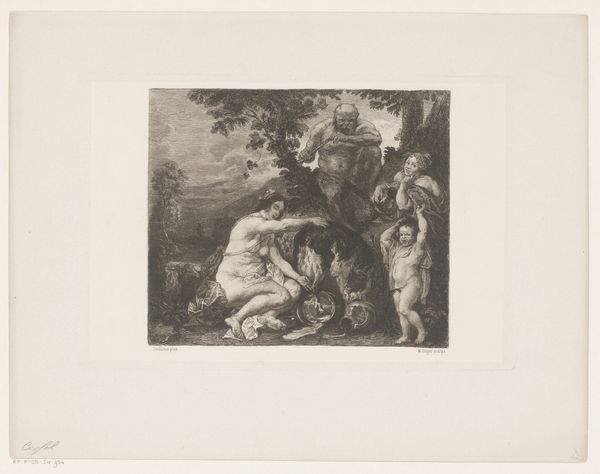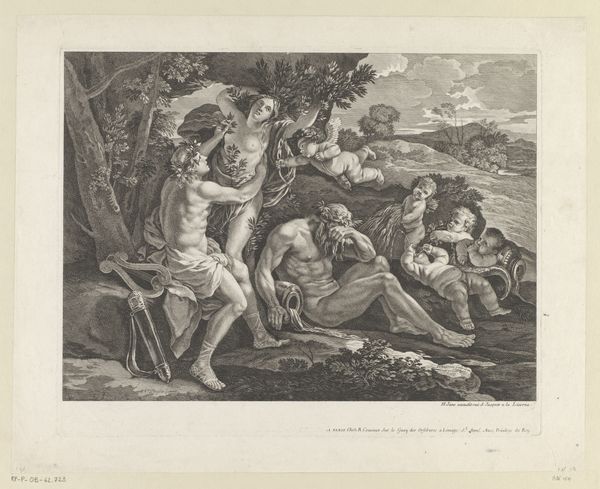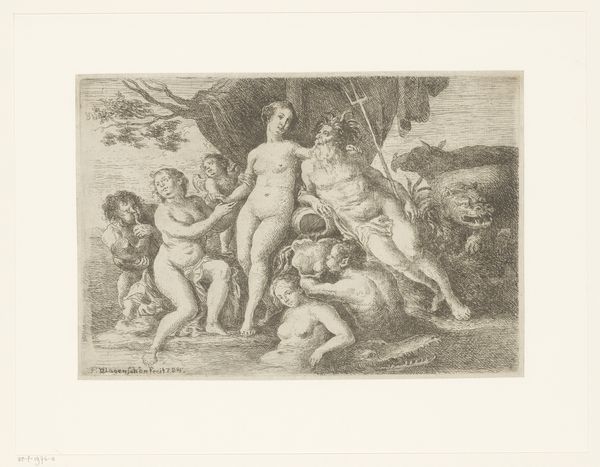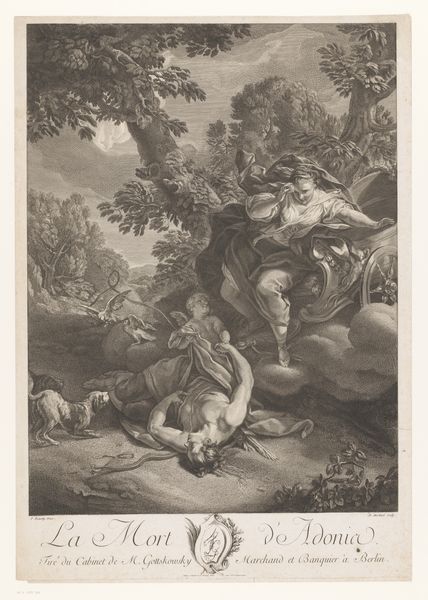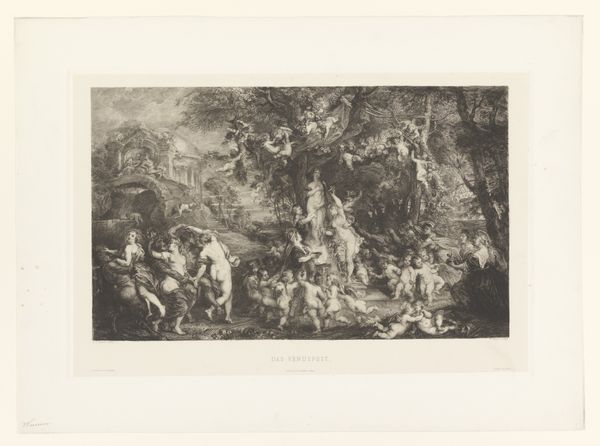
engraving
#
baroque
#
landscape
#
figuration
#
pencil drawing
#
mythology
#
genre-painting
#
nude
#
engraving
Dimensions: height 292 mm, width 410 mm
Copyright: Rijks Museum: Open Domain
Curator: This is François Tortebat's engraving, "Nymphs, Satyr and River God in a Forest," likely created between 1631 and 1690. It resides here at the Rijksmuseum. Editor: It's striking, the density of the etching. It feels quite theatrical, almost staged, with the sharp contrasts between light and shadow really drawing the eye. Curator: The baroque certainly emphasizes the dramatic. Notice the dynamism created by the swirling composition, how Tortebat directs our gaze through the gestures and poses of the figures. Consider how he has grouped the figures: the satyr and nymphs clustered together, separate from the reclining river god at the bottom. Editor: That dynamic feels loaded though, doesn't it? The satyr’s implied aggression towards the nymphs evokes a discomforting sense of patriarchal dominance within this seemingly idyllic landscape. Is this about celebrating freedom, or is it more about asserting power? The nude form is a common trope of that period; here, the artist deploys it specifically to underscore a gendered power imbalance. Curator: I understand your reading. But observe the impeccable anatomical detailing—the musculature of the satyr, the soft curves of the nymphs. Tortebat displays a mastery of form through the lines and shading. It’s an exercise in capturing idealized human figures amidst nature's embrace. He positions us, through his meticulous use of line and space, as observing, perhaps even intruding upon, a private scene. Editor: But privacy itself is a social construct. We're seeing this work through a particular historical lens. Consider that representations of women have historically been used to convey morality tales or, more frequently, as objects of male desire and consumption. Shouldn't we address that? How does that change our viewing of the image? Curator: It's about achieving pictorial harmony. Look at the ways the light dapples across the bodies, creating texture, or the way the background recedes with nuanced gradations of light. Tortebat utilizes this type of visual language as the main form of address to the viewer. Editor: Fair enough. Ultimately, though, a formal analysis like that can also serve to neutralize or even excuse these images from critical reassessment through a modern-day viewpoint. Curator: Indeed. Hopefully we’ve given everyone new ways to view and analyze this print. Editor: Agreed. There's much more to unravel in examining these layered meanings!
Comments
No comments
Be the first to comment and join the conversation on the ultimate creative platform.
